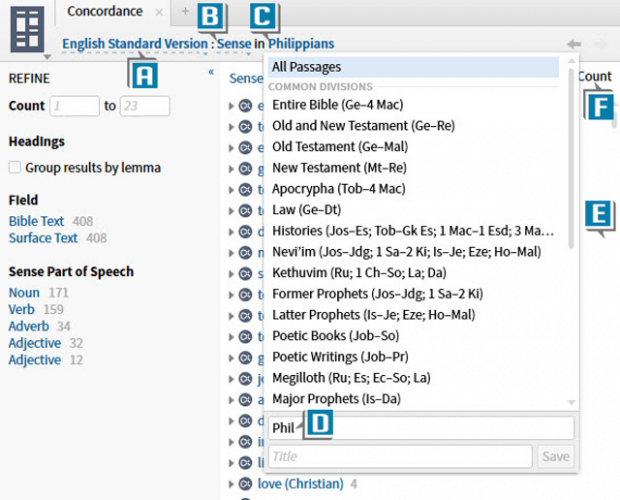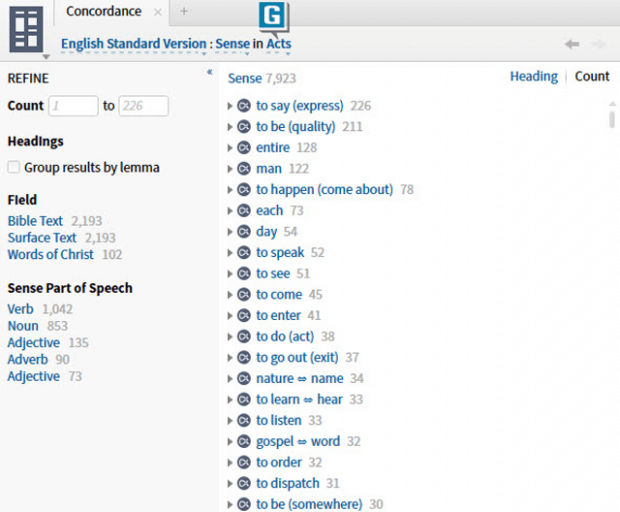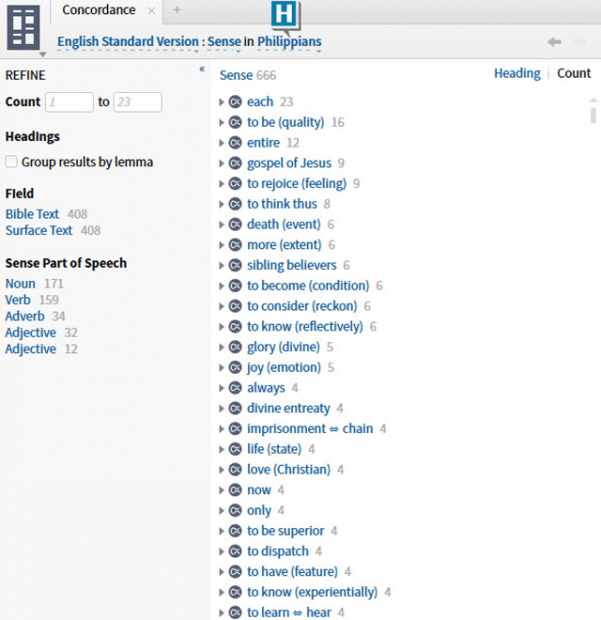The subject of today’s blog I owe to a pastor-teacher, seasoned Logos user, Camp Logos alumnus, and especially my friend, Dr. Robert Dean. Allow me to set it up for you.
Before doing detailed exegesis of passages in a biblical book, it’s a good idea to get a bird’s-eye view of the book. We should read the book numerous times looking for possible subjects, themes, or important topics covered in the book.
At a recent Camp Logos, I was showing how to use the Concordance tool to discover a count of lemmas (dictionary form of a word) in a book in the Bible. Often times repeated lemmas indicate the presence of a theme.
During a break, Robby pulled me over to his computer and suggested not only doing a lemma count, but also a Biblical Sense count in a book. This was an outstanding idea!
Before looking at the steps for such a count, keep in mind what Sense is all about. The scholars at Faithlife have thoroughly examined the Scripture and made suggestions as to what biblical words mean in their specific contexts. Their suggestions, as to the contextual meanings of words, comprise the Biblical Word Senses Dataset or Bible Sense Lexicon.
Various lemmas may share the same Sense. For example, baseball, football, and basketball are all sports. Chat, whisper, utter, and shout all have to do with talking. So a Sense count (possibly comprised of different lemmas) may indeed suggested a theme in a book.
Try this the next time you’re looking for themes:
- Choose Tools | Concordance
- Select from the resource to search drop down list an English Bible with the interlinear option such as ESV, LEB, or NASB (A)
- Be patient because it will take about 3-5 minutes for the report to initially build
- Select Sense from the reference to search drop down list (B)
- Select the verse range drop down list (C)
- Type in the New reference range box a biblical book like Acts or Philippians (D)
- Click outside the menu to close it (E)
- Click Count in the upper right of the panel to display the Senses in order of frequency (F)
- Explore the various Senses in a book looking for possible themes
- For example, build the report for:
- Acts and notice similar Senses such as: (G)
- to come
- to do (act)
- to go out (exit)
- to dispatch
- Philippians and notice similar Senses such as: (H)
- to think thus
- to consider (reckon)
- to know (reflectively)
- to know (experientially)
As I jokingly say at Camp Logos, “Please don’t start a church because of a word count, but it is an interesting way to survey a book.”
For more detailed information about Concordance, please check out the Logos 7 Bible Software Training Manual Bundle available in both print and digital formats.
Also, for an exciting and quick way to learn the software, consider coming to one of our Camps in Little Rock, AR, Tampa, FL, Atlanta, GA, Akron, OH, or Phoenix, AZ!
Morris Proctor is a certified trainer for Logos Bible Software. Morris, who has trained thousands of Logos users at his two-day Camp Logos seminars, provides many training materials.









